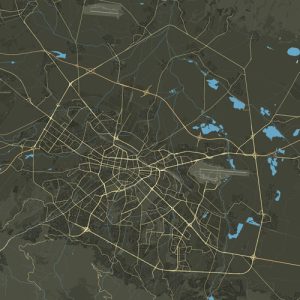The temple-tomb above the village of Starosel, Plovdiv region, is a sensation for specialists and lovers of Thracian antiquity, and already for hundreds of tourists. The tomb is located on a hill in a picturesque area above the village of Starosel, overlooking the Thracian plain, at the very foot of the Schtinska Sredna Gora. It was opened in 2000. It is the largest of the so far known Thracian mounds. It is probably from the 5-4th century BC.
The necropolis consists of 8 mounds of various sizes. The tomb is located in a mound with a height of 20 m and a diameter of 85 m, surrounded by a rampart with a circumference of 241 m, playing the role of a fortress wall. The entrance to the sanctuary is 1.60 m wide, decorated with ornaments known as “wolf’s teeth”. The tomb is constructed of well-crafted stone blocks held together by iron brackets cast with lead. It consists of: south grand staircase , two laterals, a corridor, a representative facade, a rectangular and a circular chamber.
The Thracians are one of the ancient inhabitants of our lands, bequeathing us intriguing evidence of a highly developed culture. Their tribal groups, more than 90 in number, inhabited part of South-Eastern Europe since the Neolithic until the Middle Ages. They were good farmers, craftsmen and merchants. According to the “Iliad” they took part in the Trojan War and Homer describes them as follows: “There at the end are the newly arrived Thracians.
Among them is their king Res, son of Eioneus. I saw his horses – very beautiful and large: they are whiter than snow and swift as the whirlwind. And his chariot is adorned with silver and gold. He came with huge weapons shining in gold. Beautiful to look at. Not fit for mortal men to wear them. Only the immortal gods are worthy of them.” The Thracians are the third ethnic group that forms the Bulgarian nation. In their religious beliefs, the solar and earthly beginnings were combined. They revered the Great Mother Goddess Bendida and had a highly developed cult of the dead. After his death, the deceased ruler was equated with the deities, and his tomb became a shrine. Thracian funeral rites are complex and still not fully understood.
Perhaps this is the reason why some historians and so-called contactees have launched the hypothesis that their tribes, survivors of the mythical Atlantis swallowed by the World Ocean, reached the Balkans and settled here. They became famous as items in magic and as skilled healers. But if these are legends and assumptions, the archaeological finds in the Starosel region unequivocally prove that in the 5th century BC, a Thracian settlement with powerful tribal leaders and a rich aristocracy existed here. The Thracian cult complex “Chetinova Mogila”, discovered by the archaeologist Georgi Kitov in the year 2000, which he calls a “temple”, is a hero’s tomb.
There are assumptions that Sitalk – one of the most powerful rulers of the Odris kingdom – was buried here. “Chetiny Mound” is not the only temple here, but the central place of a large cult center of numerous sanctuaries and several dozen mounds, five of which were discovered rich royal burials. The mounds are similar to each other. Only “Horizon” is an exception, because it is the only Thracian tomb with columns – two lateral and six frontal.
Around Starosel there are other mounds that have been studied and preserved, but are not open for visits. Obviously, the surprises that antiquity offers us are not over, but are yet to come. It is not by chance that the discoveries in this region were defined as sensational even for archaeologists.
Work time:
Every day from 08:30 to 16:30.
Entrance fees:
Adult – BGN 4.00.
Students and pensioners – BGN 1.00.
Talk – BGN 6.00.

